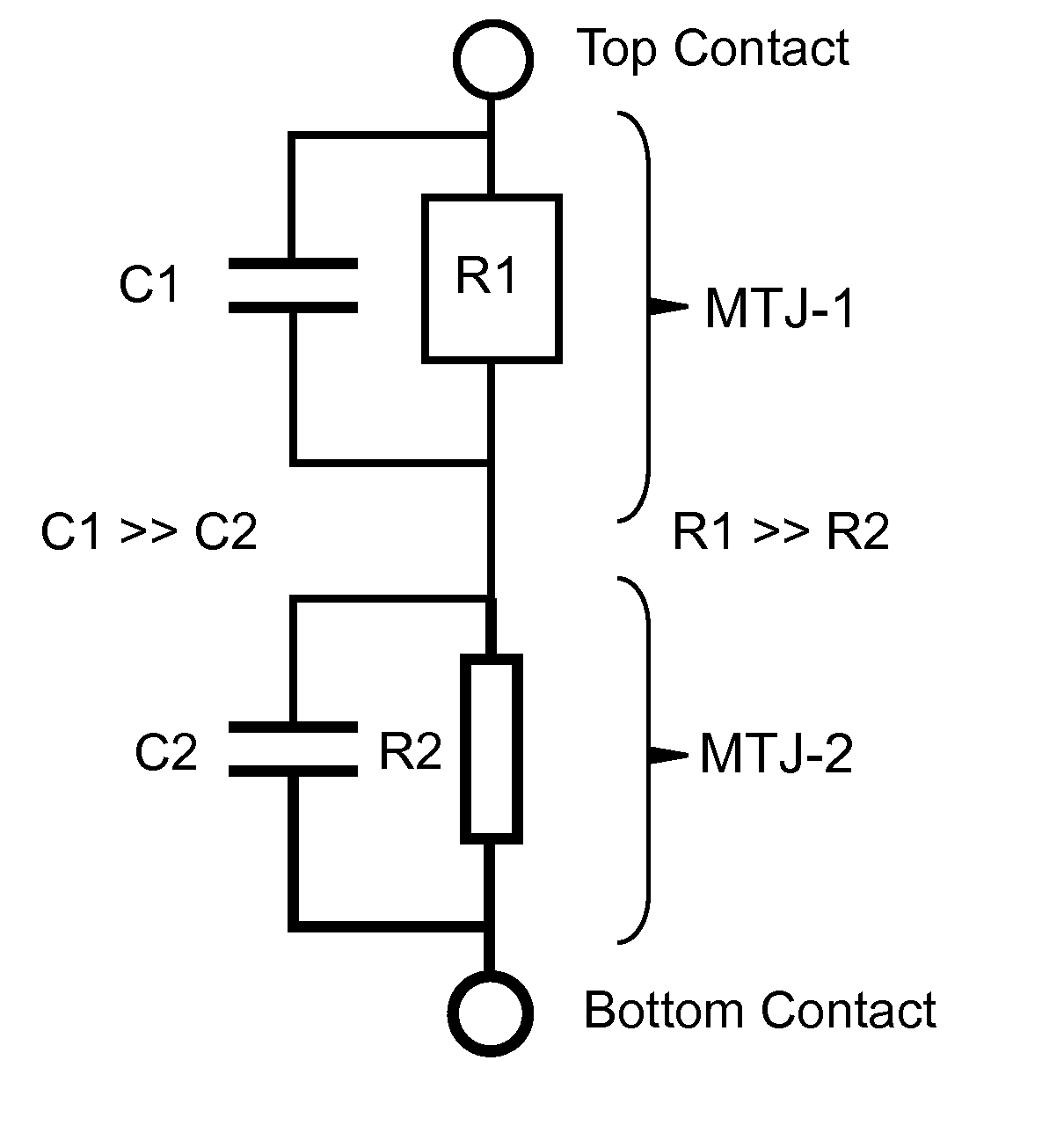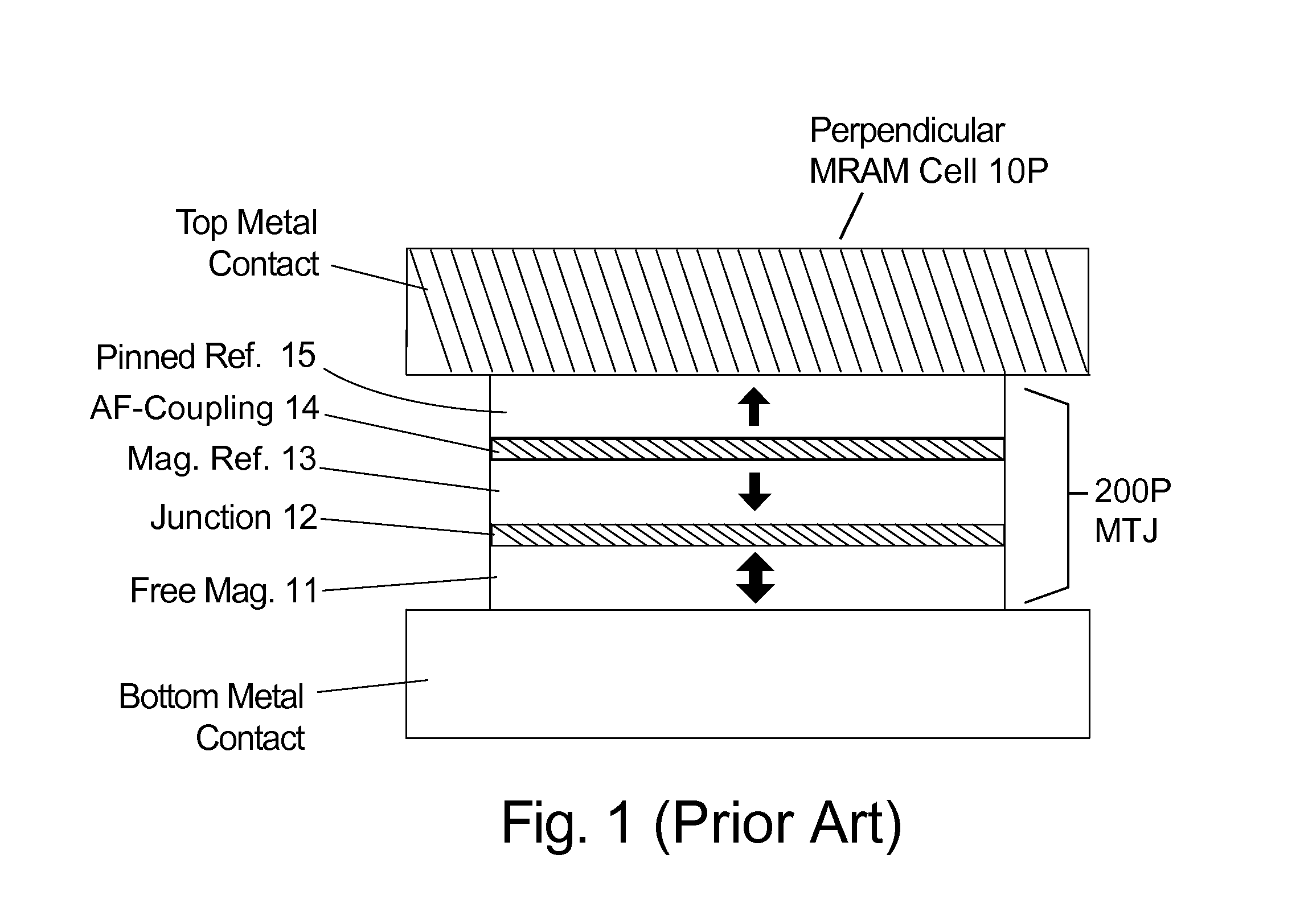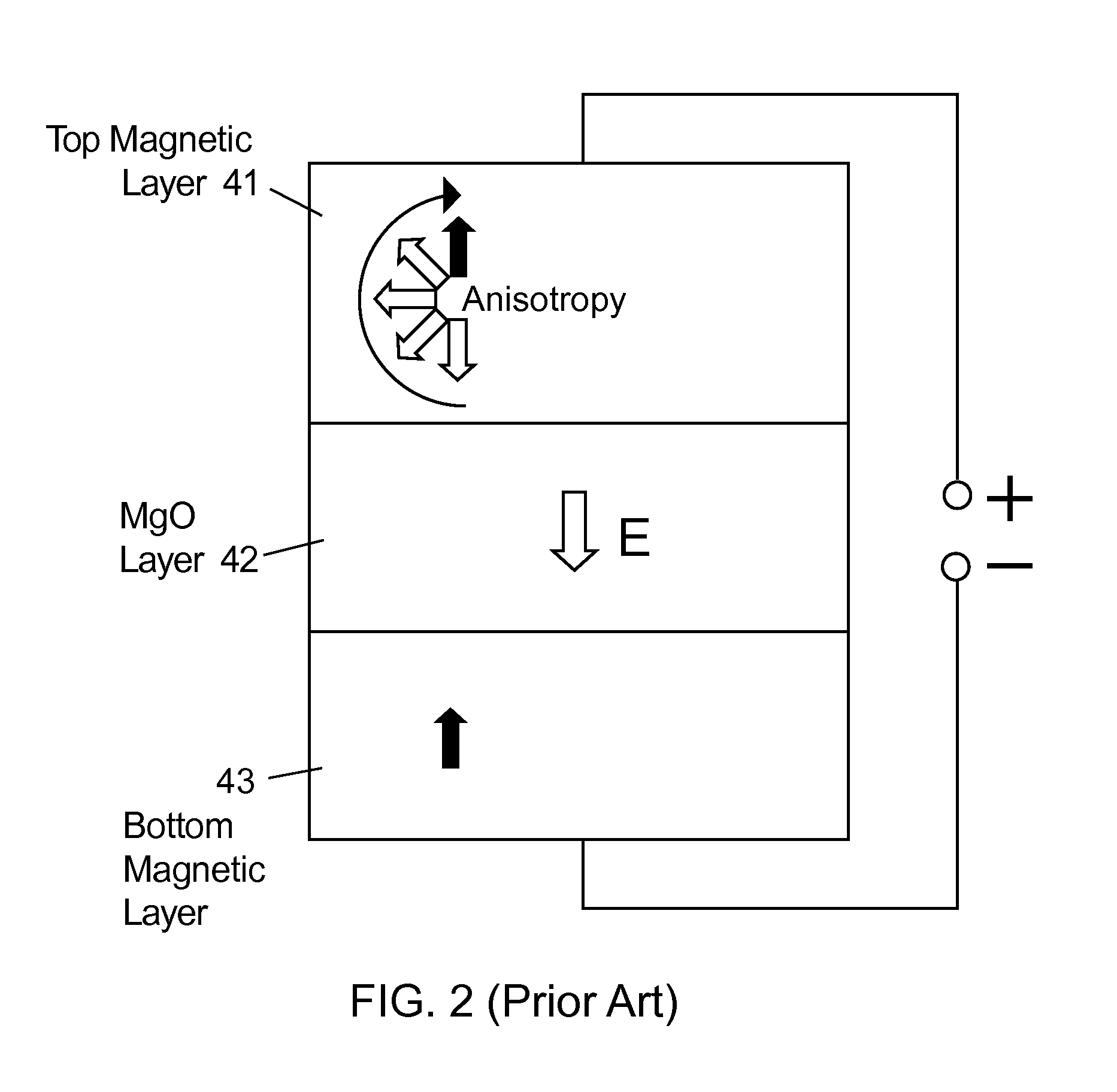Magnetoresistive logic cell and method of use
a logic cell and magnetoresistive technology, applied in static storage, digital storage, instruments, etc., to achieve the effect of reducing the mtj junction of the ra product, high resistance state of the mrlc, and effective capacitan
- Summary
- Abstract
- Description
- Claims
- Application Information
AI Technical Summary
Benefits of technology
Problems solved by technology
Method used
Image
Examples
embodiment # 2 (illustrated in fig.8)
MRLC Embodiment #2 (Illustrated in FIG. 8)
[0101]A second example of an magnetoresistive logic cell (MRLC) 50A device with a layer structure as shown in FIG. 8 will now be described. In this embodiment two additional layers are added to the structure of embodiment #1 and except for these additional layers the description above for embodiment #1 applies. As noted for embodiment #1 the entire structure can be flipped upside down as an alternative embodiment. In embodiment #2, anti-ferromagnetic exchange coupling layer 56P and magnetic pinned layer 57P are added below the nonswitchable reference layer (NRL) 55P. Embodiment #2 has an advantage over embodiment #1 because the additional magnetic field component generated by pinned layer 57P partially cancels out the magnetic field component from NRL 55P acting on common free layer 51P and switchable reference layer 53P. This reduces static coupling on the switchable layers 51P and 53P so that switching is less biased than in embodiment #1....
embodiment # 3 (illustrated in fig.9)
MRLC Embodiment #3 (Illustrated in FIG. 9)
[0104]A third example of a magnetoresistive logic cell (MRLC) 50B with a layer structure as shown in FIG. 9 will now be described. In this embodiment all of the magnetic layers have easy magnetization axes in the film plane, i.e. in-plane anisotropy. As for the previous embodiments, the entire layer structure can be flipped upside down as an alternative embodiment. Current flow is between the top and bottom contacts.
[0105]In embodiment #3, the function of the nonswitchable reference layer 55H is enhanced by adding anti-ferromagnetic (AF) exchange coupling layer 56H, magnetic pinned layer 57H, and anti-ferromagnetic layer 58H between nonswitchable reference layer 55H and the bottom contact. This 4-layer structure forms a generic reference & pinned layer structure which is known in the art for use in MRAM in-plane MTJs. The advantages for using this 4-layer structure in a conventional single MTJ MRAM device also apply to use in an in-plane MRL...
PUM
 Login to View More
Login to View More Abstract
Description
Claims
Application Information
 Login to View More
Login to View More - R&D
- Intellectual Property
- Life Sciences
- Materials
- Tech Scout
- Unparalleled Data Quality
- Higher Quality Content
- 60% Fewer Hallucinations
Browse by: Latest US Patents, China's latest patents, Technical Efficacy Thesaurus, Application Domain, Technology Topic, Popular Technical Reports.
© 2025 PatSnap. All rights reserved.Legal|Privacy policy|Modern Slavery Act Transparency Statement|Sitemap|About US| Contact US: help@patsnap.com



